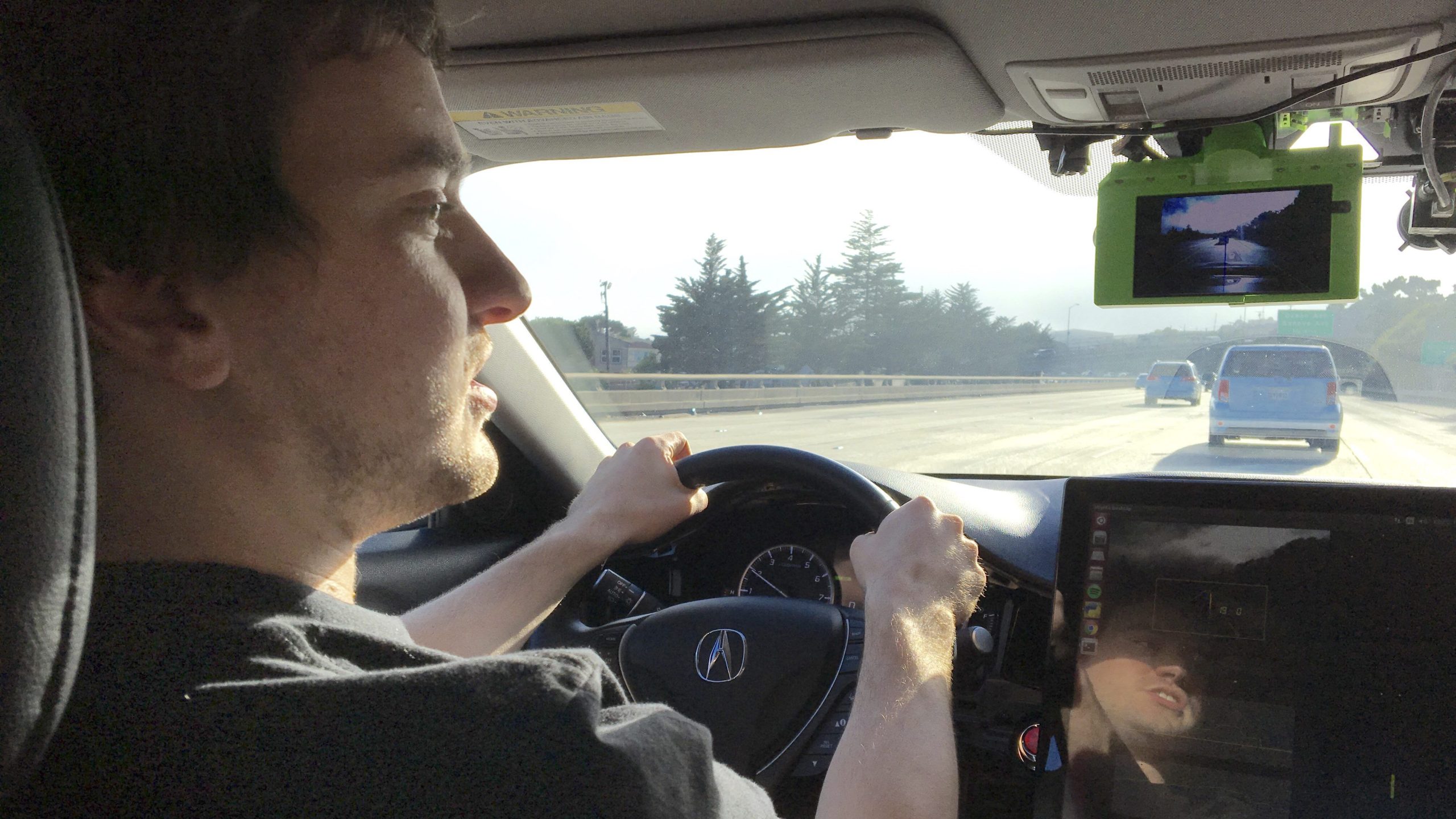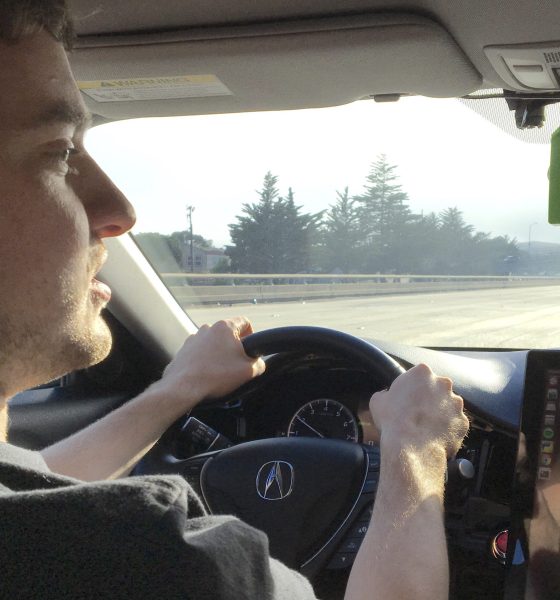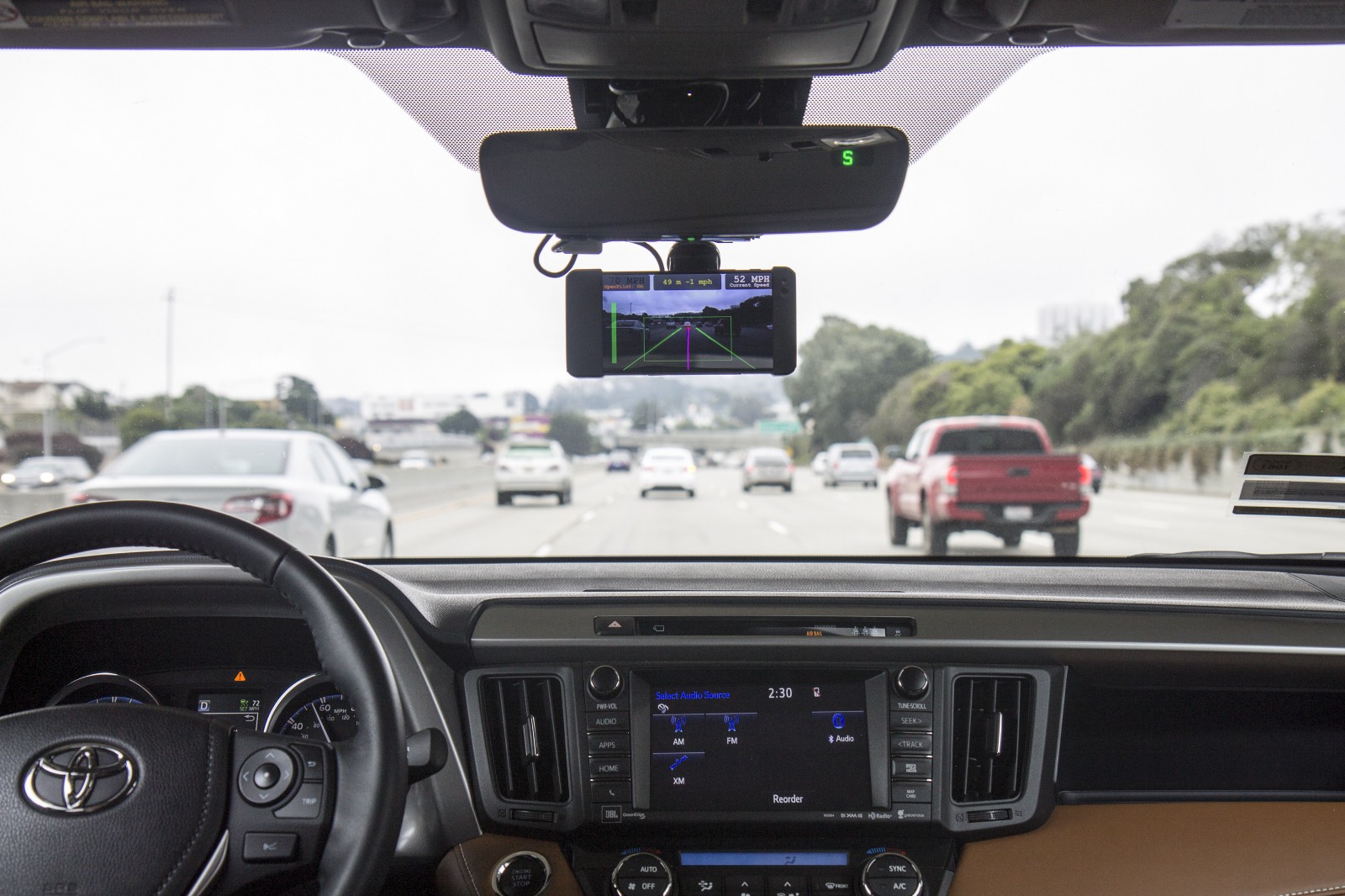

News
Comma.ai’s George Hotz talks Tesla Autopilot, AI Vision and the future of self-driving cars
One of the most outspoken players in the race to autonomous cars has some strong thoughts on where the future of self-driving technology is headed. George Hotz, the CEO and founder of Comma.ai, believes heavily in a future where AI-driven computer vision powers our self-driving cars. I sat down with Hotz on the NextMobility podcast to discuss everything from Tesla’s Autopilot to Comma.ai’s suite of products that take aim at converting the regular car into a self-driving vehicle. Listen below, or download it on Apple Podcasts or on other platforms.
So how do we get there? According to Hotz, computer vision technology is already good enough to be comparable to LiDAR. The real problem is getting AI to understand the environment and make intelligent decisions. Predictive complexity and being able to reason what course of action is needed is the challenging part of self-driving vehicles, George explains.
“That’s the easy part (Computer vision), the hard part is- okay I’m trying to merge up here, how is my model going to behave.” – George Hotz
Hotz famously showed a working prototype of his self-driving technology in a Bloomberg Businessweek interview with Ashley Vance in December 2015. Since then the company’s strategy has changed along with its technology. Hotz open-sourced their self-driving software last November and called it Openpilot after the NHTSA threatened to shut down his project.
Hotz has avoided dealing with regulators by creating a Comma.ai hardware ‘ecosystem’ this year that can run the open source software. Rather than simply making hardware that allows the vehicle to drive autonomously, the hardware creates an interface to allow computers to interact with the vehicle in several ways.
Comma.ai’s new product line consists of the EON dashcam that also doubles as a navigation and music interface, the Panda OBD-II connector, and a Giraffe connector to seamless tie into a vehicle’s system. Using all three products, one can run music, navigation and even their Openpilot driving agent on the vehicle.
In 2015, Hotz considered ‘contracting’ with Tesla to help develop their Autopilot software, but then decided to pursue the technology on his own. I asked Hotz why he thought Tesla has had trouble retaining leaders in the division and he shared his theory.
“Elon has an idea in his head that it (self-driving vehicles powered by computer vision and AI) should be easy, and he’s right- it absolutely should be easy. So every time someone doesn’t make it seem easy- he fires them. Which is actually a probably good strategy. So what’s the problem… it’s just actually implementing all the stuff, I mean implementation is hard. It’s not the theory, the theory is all there,” said Hotz on the NextMobility Podcast.
Hotz also believes that other automakers are still very behind Tesla in terms of vehicle architecture. While other companies are launching long-range electric vehicles or planning their development, they still have yet to compete with Tesla’s technological advancements.
“They (other automotive companies) are going to be like, holy crap- we are five years behind… the car manufacturers still have no idea how far they are behind. The Model S has sophisticated compute, OTA, Linux boxes, a large touchscreen, and a modern user interface. What does the Chevy bolt have?”
Who do you think will win the self-driving game?

Elon Musk
Starlink passes 9 million active customers just weeks after hitting 8 million
The milestone highlights the accelerating growth of Starlink, which has now been adding over 20,000 new users per day.

SpaceX’s Starlink satellite internet service has continued its rapid global expansion, surpassing 9 million active customers just weeks after crossing the 8 million mark.
The milestone highlights the accelerating growth of Starlink, which has now been adding over 20,000 new users per day.
9 million customers
In a post on X, SpaceX stated that Starlink now serves over 9 million active users across 155 countries, territories, and markets. The company reached 8 million customers in early November, meaning it added roughly 1 million subscribers in under seven weeks, or about 21,275 new users on average per day.
“Starlink is connecting more than 9M active customers with high-speed internet across 155 countries, territories, and many other markets,” Starlink wrote in a post on its official X account. SpaceX President Gwynne Shotwell also celebrated the milestone on X. “A huge thank you to all of our customers and congrats to the Starlink team for such an incredible product,” she wrote.
That growth rate reflects both rising demand for broadband in underserved regions and Starlink’s expanding satellite constellation, which now includes more than 9,000 low-Earth-orbit satellites designed to deliver high-speed, low-latency internet worldwide.
Starlink’s momentum
Starlink’s momentum has been building up. SpaceX reported 4.6 million Starlink customers in December 2024, followed by 7 million by August 2025, and 8 million customers in November. Independent data also suggests Starlink usage is rising sharply, with Cloudflare reporting that global web traffic from Starlink users more than doubled in 2025, as noted in an Insider report.
Starlink’s momentum is increasingly tied to SpaceX’s broader financial outlook. Elon Musk has said the satellite network is “by far” the company’s largest revenue driver, and reports suggest SpaceX may be positioning itself for an initial public offering as soon as next year, with valuations estimated as high as $1.5 trillion. Musk has also suggested in the past that Starlink could have its own IPO in the future.
News
NVIDIA Director of Robotics: Tesla FSD v14 is the first AI to pass the “Physical Turing Test”
After testing FSD v14, Fan stated that his experience with FSD felt magical at first, but it soon started to feel like a routine.

NVIDIA Director of Robotics Jim Fan has praised Tesla’s Full Self-Driving (Supervised) v14 as the first AI to pass what he described as a “Physical Turing Test.”
After testing FSD v14, Fan stated that his experience with FSD felt magical at first, but it soon started to feel like a routine. And just like smartphones today, removing it now would “actively hurt.”
Jim Fan’s hands-on FSD v14 impressions
Fan, a leading researcher in embodied AI who is currently solving Physical AI at NVIDIA and spearheading the company’s Project GR00T initiative, noted that he actually was late to the Tesla game. He was, however, one of the first to try out FSD v14.
“I was very late to own a Tesla but among the earliest to try out FSD v14. It’s perhaps the first time I experience an AI that passes the Physical Turing Test: after a long day at work, you press a button, lay back, and couldn’t tell if a neural net or a human drove you home,” Fan wrote in a post on X.
Fan added: “Despite knowing exactly how robot learning works, I still find it magical watching the steering wheel turn by itself. First it feels surreal, next it becomes routine. Then, like the smartphone, taking it away actively hurts. This is how humanity gets rewired and glued to god-like technologies.”
The Physical Turing Test
The original Turing Test was conceived by Alan Turing in 1950, and it was aimed at determining if a machine could exhibit behavior that is equivalent to or indistinguishable from a human. By focusing on text-based conversations, the original Turing Test set a high bar for natural language processing and machine learning.
This test has been passed by today’s large language models. However, the capability to converse in a humanlike manner is a completely different challenge from performing real-world problem-solving or physical interactions. Thus, Fan introduced the Physical Turing Test, which challenges AI systems to demonstrate intelligence through physical actions.
Based on Fan’s comments, Tesla has demonstrated these intelligent physical actions with FSD v14. Elon Musk agreed with the NVIDIA executive, stating in a post on X that with FSD v14, “you can sense the sentience maturing.” Musk also praised Tesla AI, calling it the best “real-world AI” today.
News
Tesla AI team burns the Christmas midnight oil by releasing FSD v14.2.2.1
The update was released just a day after FSD v14.2.2 started rolling out to customers.

Tesla is burning the midnight oil this Christmas, with the Tesla AI team quietly rolling out Full Self-Driving (Supervised) v14.2.2.1 just a day after FSD v14.2.2 started rolling out to customers.
Tesla owner shares insights on FSD v14.2.2.1
Longtime Tesla owner and FSD tester @BLKMDL3 shared some insights following several drives with FSD v14.2.2.1 in rainy Los Angeles conditions with standing water and faded lane lines. He reported zero steering hesitation or stutter, confident lane changes, and maneuvers executed with precision that evoked the performance of Tesla’s driverless Robotaxis in Austin.
Parking performance impressed, with most spots nailed perfectly, including tight, sharp turns, in single attempts without shaky steering. One minor offset happened only due to another vehicle that was parked over the line, which FSD accommodated by a few extra inches. In rain that typically erases road markings, FSD visualized lanes and turn lines better than humans, positioning itself flawlessly when entering new streets as well.
“Took it up a dark, wet, and twisty canyon road up and down the hill tonight and it went very well as to be expected. Stayed centered in the lane, kept speed well and gives a confidence inspiring steering feel where it handles these curvy roads better than the majority of human drivers,” the Tesla owner wrote in a post on X.
Tesla’s FSD v14.2.2 update
Just a day before FSD v14.2.2.1’s release, Tesla rolled out FSD v14.2.2, which was focused on smoother real-world performance, better obstacle awareness, and precise end-of-trip routing. According to the update’s release notes, FSD v14.2.2 upgrades the vision encoder neural network with higher resolution features, enhancing detection of emergency vehicles, road obstacles, and human gestures.
New Arrival Options also allowed users to select preferred drop-off styles, such as Parking Lot, Street, Driveway, Parking Garage, or Curbside, with the navigation pin automatically adjusting to the ideal spot. Other refinements include pulling over for emergency vehicles, real-time vision-based detours for blocked roads, improved gate and debris handling, and Speed Profiles for customized driving styles.









